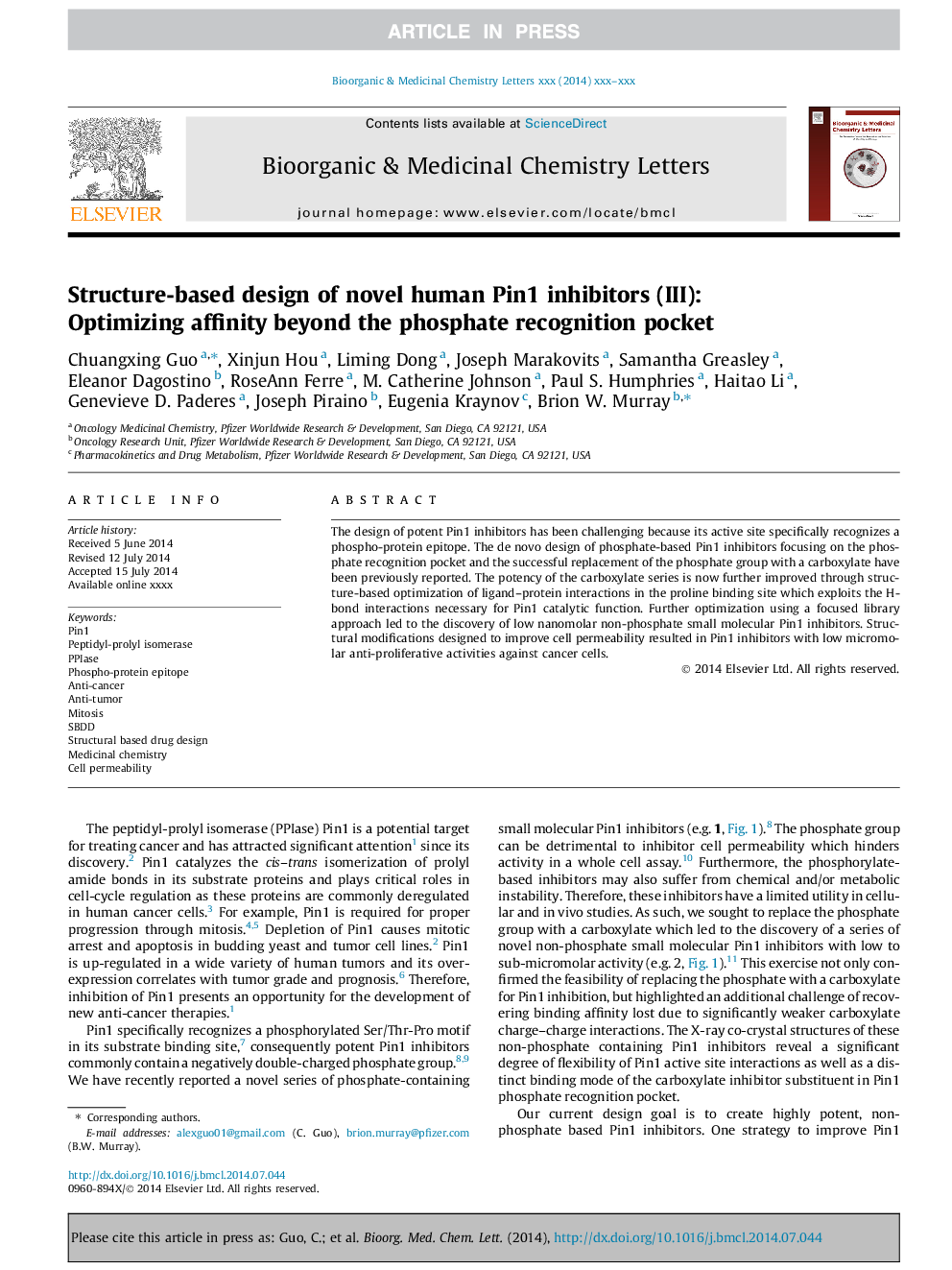| Article ID | Journal | Published Year | Pages | File Type |
|---|---|---|---|---|
| 10590967 | Bioorganic & Medicinal Chemistry Letters | 2014 | 5 Pages |
Abstract
The design of potent Pin1 inhibitors has been challenging because its active site specifically recognizes a phospho-protein epitope. The de novo design of phosphate-based Pin1 inhibitors focusing on the phosphate recognition pocket and the successful replacement of the phosphate group with a carboxylate have been previously reported. The potency of the carboxylate series is now further improved through structure-based optimization of ligand-protein interactions in the proline binding site which exploits the H-bond interactions necessary for Pin1 catalytic function. Further optimization using a focused library approach led to the discovery of low nanomolar non-phosphate small molecular Pin1 inhibitors. Structural modifications designed to improve cell permeability resulted in Pin1 inhibitors with low micromolar anti-proliferative activities against cancer cells.
Keywords
Related Topics
Physical Sciences and Engineering
Chemistry
Organic Chemistry
Authors
Chuangxing Guo, Xinjun Hou, Liming Dong, Joseph Marakovits, Samantha Greasley, Eleanor Dagostino, RoseAnn Ferre, M. Catherine Johnson, Paul S. Humphries, Haitao Li, Genevieve D. Paderes, Joseph Piraino, Eugenia Kraynov, Brion W. Murray,
